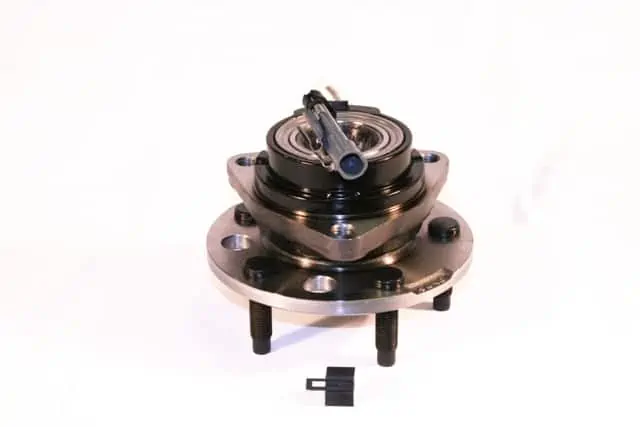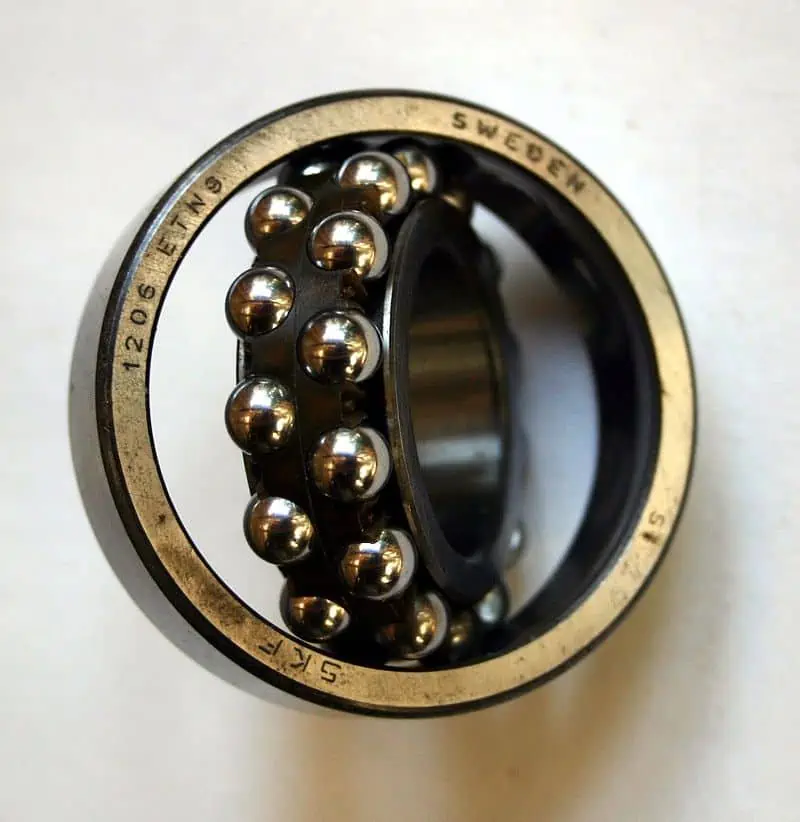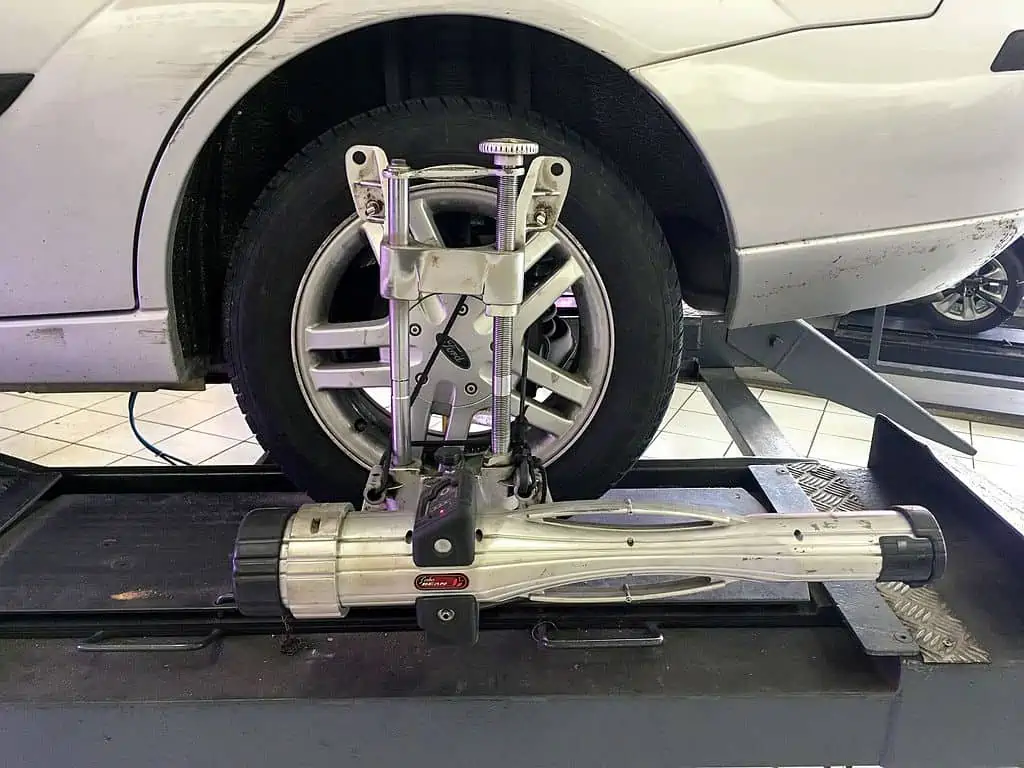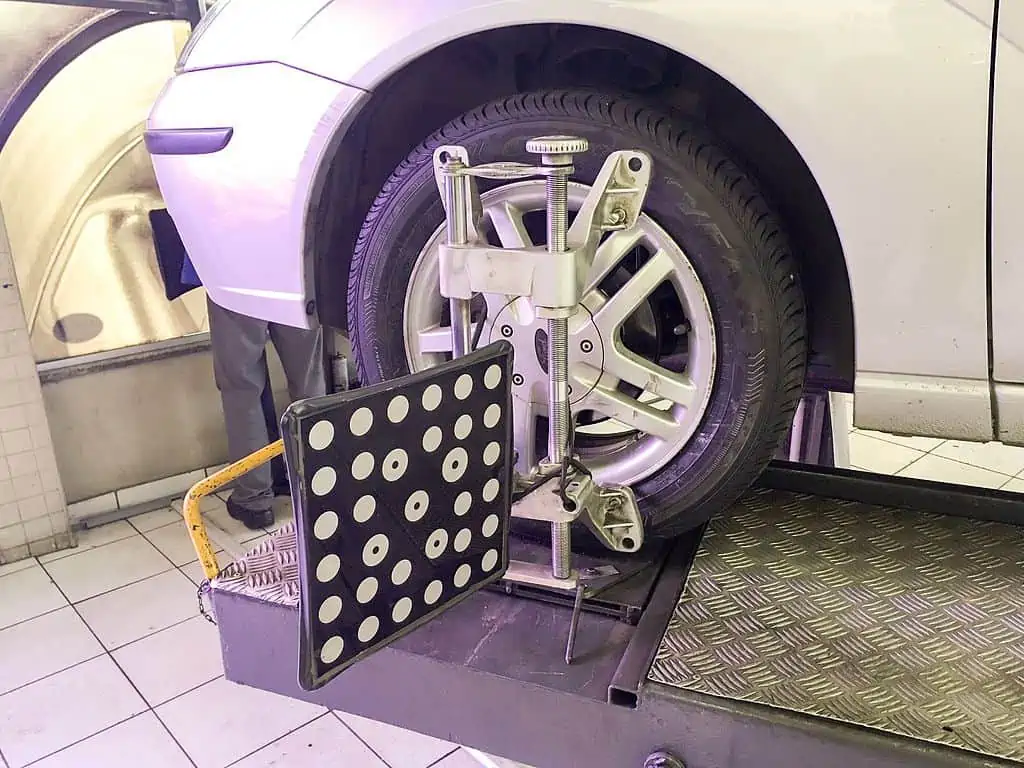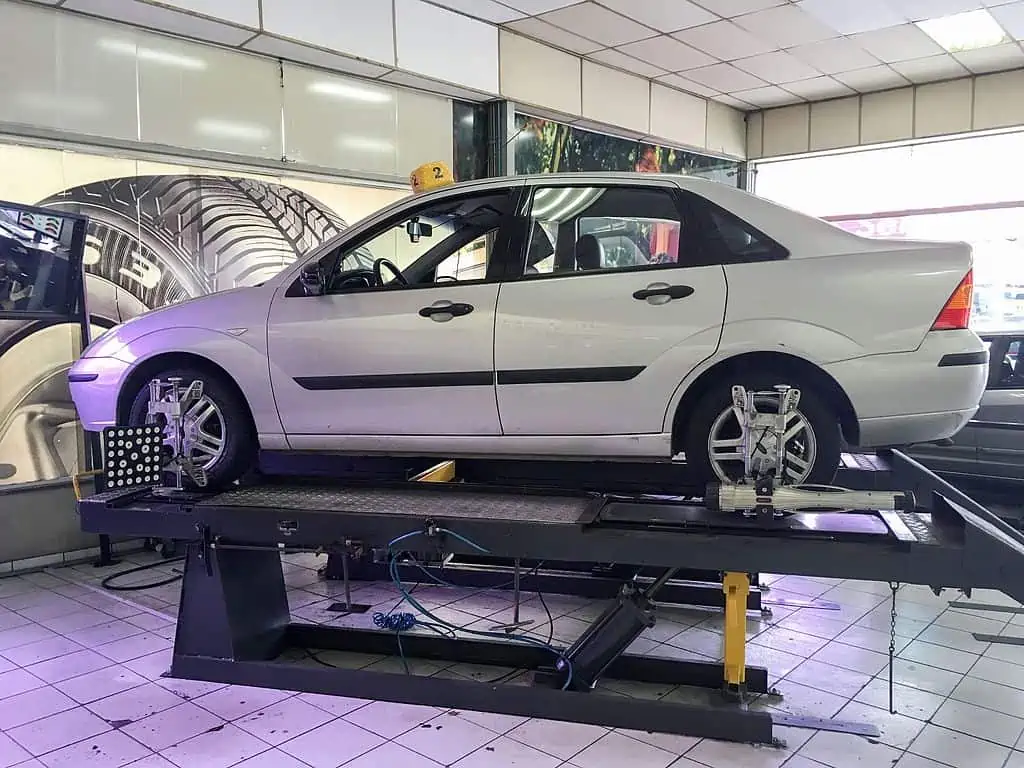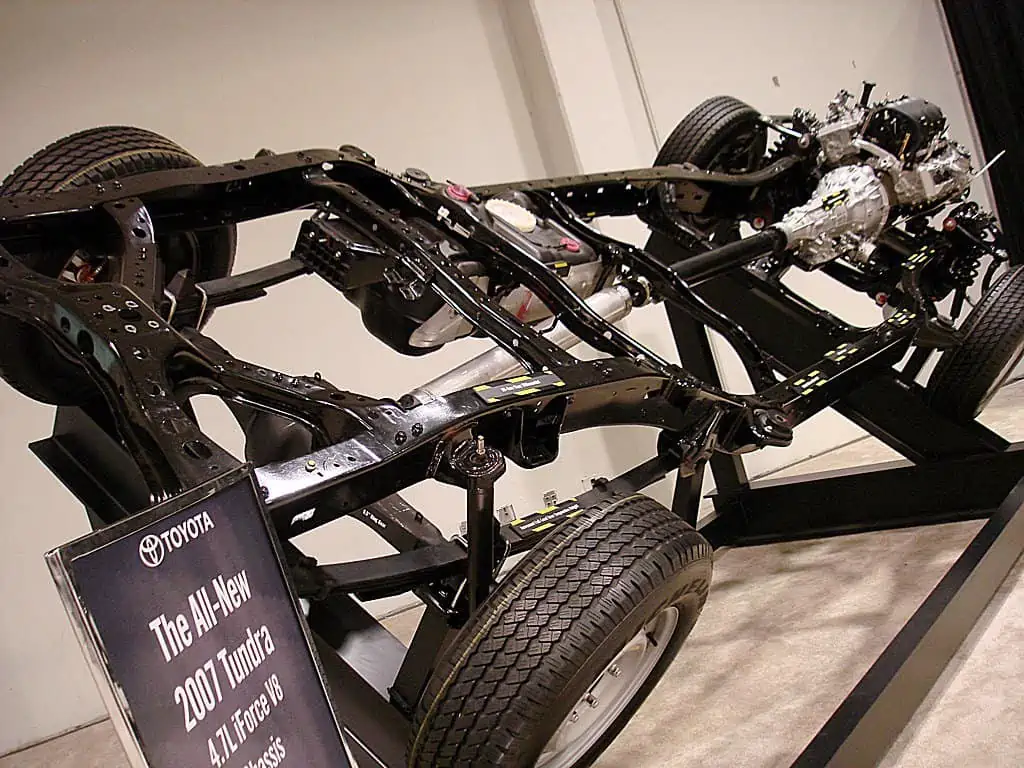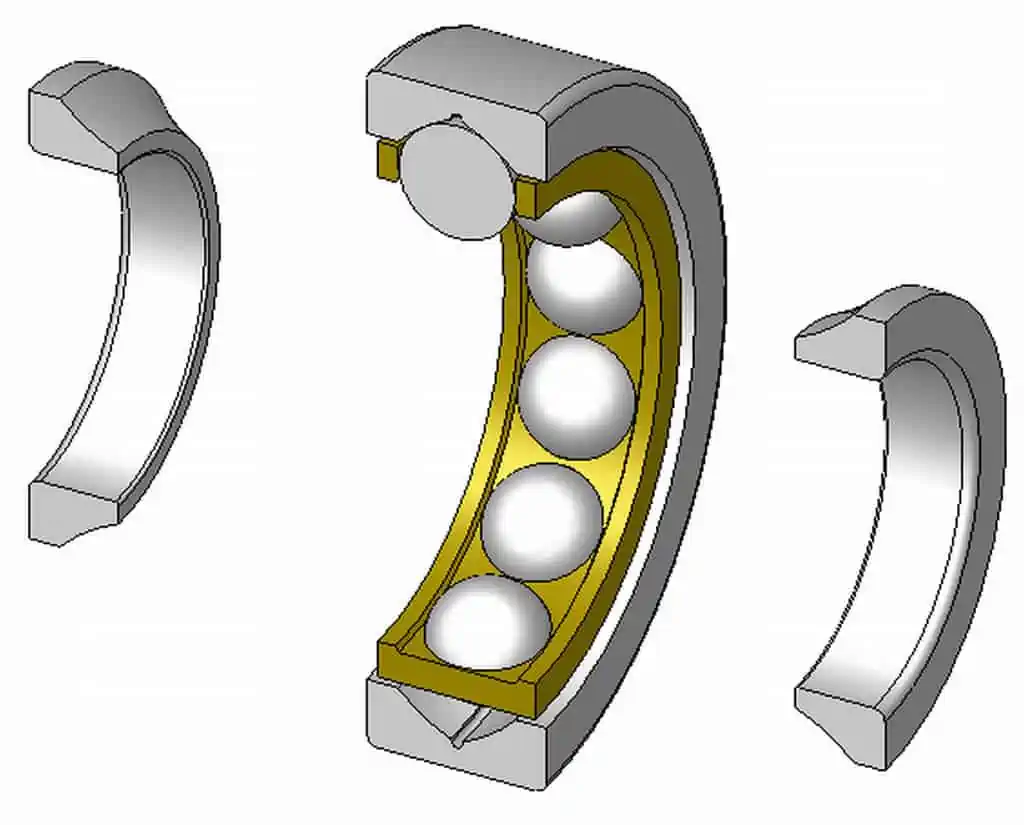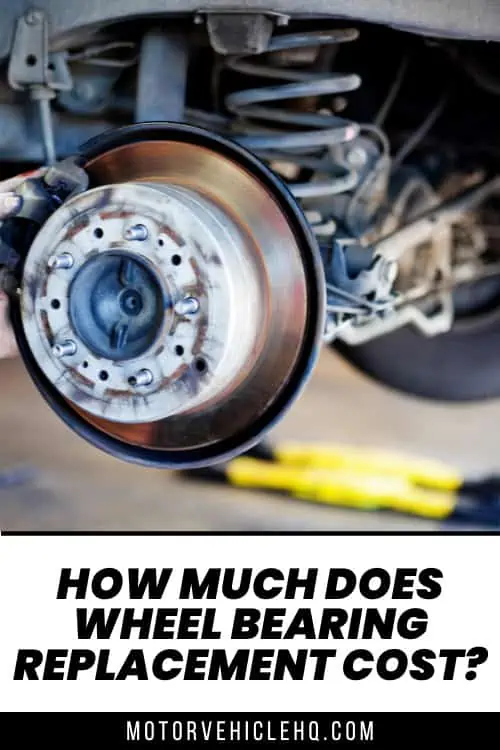You may have read or heard of wheel bearings, and you may be interested in learning how much it would cost to replace a wheel bearing. But what are they specifically?
A wheel bearing is a group of steel balls or rollers encased in a metal ring that is located in the middle of your wheel hub and is hollow. The wheel bearing, which is mounted on the axle shaft of your automobile, helps to minimize friction when the wheel rotates, resulting in a comfortable ride.
Every automobile has a wheel bearing on each of its wheels, and your car must function properly. There are many types of wheel bearings used in cars, which we shall examine more.
For the weight to be transmitted equally throughout the wheels of your automobile, the best wheel bearing must be installed.
Wheel bearings are vulnerable to abuse since they sustain your car’s weight when you’re driving. This is especially true if you go on a road that is bumpy and uneven and has several potholes.
The wheel bearing may corrode excessively over time as a result of other driving circumstances such as heavy water and dirt.
Wheel bearings will eventually become worn out, just like practically any other auto component. Additionally, a serious collision might seriously harm the wheel bearings.
The many types of wheel bearings, warning indications to watch out for, and of course the replacement cost will all be covered in more detail.
A Wheel Bearing: What Is It?
When your automobile rolls, a wheel bearing spins erratically at each corner of the vehicle. The component that makes it possible for the wheels to rotate is the wheel bearing.
Wheel hub assembly by PCAO / CC BY-SA 3.0 The typical type hub assembly affects the wheel bearing replacement cost.
It may be found near the hub of the wheel assembly. It is made up of a housing and internal ball or roller bearings that are encased in holders or races. Additionally, there is a lubricant there.
It is a “for life” lubricant. A contemporary wheel bearing doesn’t need to be “lubed.” Additionally, they cannot be taken apart, cleaned, lubricated, and then put back together. You swap them out.
There is no one definition for the phrase “wheel bearing.” When a business says, “You need a wheel bearing,” what they mean is that you will need the wheel bearing assembly, which they may supply as a single item.
Both the housing as well as the internal bearing are part of it. It can also be a component of a wheel hub system. By the way, this isn’t necessarily a terrible thing.
If your car has a replaceable bearing, the mechanic will remove the housing, remove the old bearing using a press or another method, and then install the new bearing using a press. This requires time. Money is time.
While installing a wheel bearing is not vaccine science, it is also not typically a do-it-yourself project. The bearing could be simpler to install and cost approximately the same if it arrives as part of an assembly. Therefore, if “assembly” is included in the job description, don’t become alarmed.
A Range of Wheel Bearing Types
For various reasons, different manufacturers will utilize various wheel bearing types; some are simpler to produce, while others will enhance the vehicle’s performance. Here are a few types of wheel bearings that are often used:
1. The Ball Bearings
Due to its simplicity and extreme adaptability, this type of bearing is among the most often utilized. Both thrust loads (cornering pressure) and radial loads (the weight of the vehicle on the tire) may be handled by them very effectively. This is a common feature of bicycles, vehicles, and even roller skate wheels.
2. The Precision Ball Bearings
These have a ball-bearing-like appearance. They can handle even greater loads and pressure because of their increased rotational speed compared to traditional ball bearings and less friction, which also minimizes heat generation.
These advantages enable the automobile to function more efficiently. They may be utilized for more demanding and harsh tasks since they can withstand more pressure. This kind of bearing is frequently seen in race cars, performance or exotic vehicles, as well as airplanes.
3. The Roller Bearings
As these bearings don’t manage cornering pressure effectively, you generally won’t find them in a car. Only at low to medium speeds can they manage loads. Usually, you’ll find these in hand trucks or shopping carts.
4. The Tapered Roller Bearings
In autos and trucks, tapered roller bearings are very often utilized. They will have cone-shaped roller bearings that aid in cornering pressure in place of a ball. Because of this, tapered roller bearings are utilized more frequently than normal roller bearings.
Plastic caged ball bearing by Mr. PIM / CC BY-SA 3.0 It can handle even greater loads and pressure because of their increased rotational speed.
What are the Symptoms of Bad Wheel Bearings?
You would need to disassemble your suspension system to manually inspect the ball bearings in your automobile.
It seems sensible that not everyone will have the knowledge or time to physically inspect the wheel bearing on their automobile. Fortunately, you may check for other warning indicators to determine whether your automobile has a worn or cracked wheel bearing. The following signs are ones you should watch out for:
1. Irregular Tires Wear
A faulty or worn-out wheel bearing might make your wheel lose or increase vibration while you’re driving. Due to the varying degrees of vibration experienced by each wheel, this will lead to uneven tire wear. In addition to sitting differently from the others, loose wheels also result in uneven tire wear.
If you are doing tire rotations or replacing your tires if you believe you have a faulty wheel bearing, make careful to inspect each tire.
Remember that unequal tires can also result from imbalanced tires. Uneven tire wear in your automobile might also be a result of poor wheel alignment. Therefore, before assuming that it’s due to a faulty wheel bearing, be sure the other symptoms are present as well.
2. Noises That are Humming or Grinding
Loud sounds coming from the tires are another typical sign of faulty wheel bearings. The sounds are brought on by bad wheel bearings losing lubricity, which increases friction. When you drive, you often hear what sounds like two pieces of metal grinding against one other.
The sounds are brought on by bad wheel bearings losing lubricity, which increases friction.
The wheel bearing is likely to be the source of the noise if it grows louder as you drive faster.
It is recommended to get it examined if a loud, odd, or persistent noise is heard while driving. Whatever the reason, automobiles shouldn’t produce loud noises when they’re moving. The motor, wind, and tire noises are absent.
3. Vibration of the Steering Wheel
Your steering wheel may begin to tremble while you drive if the wheel bearings are in an extremely terrible condition. Similar to the grinding noises, it normally occurs at lower speeds and grows worse as you travel.
Remember that uneven tires may also be the cause of steering wheel vibration. Unbalanced tires, however, often only create vibrations at high speeds, typically above 60 mph or motorway speeds. While at speeds lower than that, steering wheel vibration brought on by a damaged bearing might happen.
Get your tires balanced to check if the issue remains if you are experiencing steering wheel shaking. If so, it’s conceivable that damaged wheel bearings are what’s causing the vibration.
Having said that, there is no need to do so if your tires have just been balanced. Steering wheel vibration normally doesn’t start up again for a year or two following a tire balance.
The automobile feeling not tight is another sign that you might detect from the steering wheel. This one is a little trickier to explain, and unless you’re an attentive driver, you might not even notice it.
Self Aligned ball bearing by Androstachys / CC BY-SA 3.0 They can handle even greater loads and pressure because of their increased rotational speed compared to traditional ball bearings and less friction, which also minimizes heat generation.
But because a faulty wheel bearing makes a car seem loose, the handling is seen as being less accurate. This is a result of excessive wheel wobbling brought on by poor bearings, which brings us to the next symptom:
4. Wheel Wobbling or Play In Excess
You must raise your automobile and have all four wheels supported by jack supports to identify this problem. Grab each wheel as it is raised, then try to rock it back and forth. You probably have a faulty wheel bearing if the wheels wobble or have too much “play.”
Normally, when an automobile is rocked, its wheels should remain securely in place rather than wobbling. However, if it does, you must get it examined. In any event, having too many wheel wobbles while driving might be quite risky.
In addition to these signs, keep an eye out for the ABS light on your dashboard if you drive a more recent vehicle. Numerous things, mostly brake-related, can be indicated by the ABS light. The ABS light, however, is frequently used by manufacturers to indicate a wheel bearing issue as well.
You might wish to visit a repair facility if you experience such symptoms and the ABS light is on. The issue should be identified and fixed as quickly as feasible.
What Is the Average Wheel Bearing Replacement Cost for the Front, Rear, and Hub Wheel Bearing?
Replacement wheel bearings typically cost $250 to $850. Wheel bearing replacement requires between $150 and $250 in labor expenses and $150 to $450 in components. This pricing range does not account for taxes or fees, your car, or your particular location.
The brand and model of the vehicle, the labor rate at the mechanic’s shop, and the price of the replacement components are just a few of the numerous variables that might impact the price of changing a wheel bearing.
One wheel bearing replacement typically costs around $350. But expensive brands typically cost more.
Let’s now talk about the expense of replacing the hub, rear, and front bearings.
The Front Wheel Bearing Replacement Cost
Here are the typical costs associated with replacing the front wheel bearings on both their left and right sides.
1. For Both Sides
The steering knuckle arm assembly includes front-wheel bearings that are attached to your car’s drive axle components.
The purpose of these bearings is to prevent frequent replacement. It will cost between $260 and $480 to repair the bearings on both front wheels.
For the front wheel bearings, the components alone cost between $120 and $200. The labor charges, however, will be somewhat higher, ranging from $140 to $280.
The precise cost will vary depending on the make and model of your car and the pricing charged by your neighborhood mechanic. Expect to pay extra for huge trucks, sports cars, and luxury vehicles.
Ford Focus wheels by Mike Peel / CC BY-SA 4.0 A well aligned wheel helps your wheel bearings to last long.
2. For One Side
These expenses will roughly be split in half if you are only replacing the wheel bearing in one of your front wheels. Expect to spend, on average, between $130 and $220 for the overall cost. Between $60 and $100 will be spent on parts, and between $70 and $140 will be spent on labor.
The Rear Wheel Bearing Replacement Cost
Here are the typical costs associated with replacing the rear wheel bearings on both sides and one side, respectively.
1. For Both Sides
The rear wheel bearings will be slightly less expensive to repair, although this will depend on the brand and model of the vehicle. The price range for a full rear wheel bearing replacement is between $240 and $460.
The cost of parts will typically range from $100 to $180. The price of labor will range from $140 to $280.
2. For One Side
It will cost between $120 and $240 to finish the task if you are only replacing one of the rear wheel bearings. Parts range from $50 to $90, while labor costs between $70 and $140.
Even though they are all only estimates, these prices provide a reasonable idea of what to anticipate to pay. The good news is that wheel bearings don’t need to be replaced very frequently because they take a long time to wear out.
The Rear Hub Bearing Replacement Cost
In certain cars, the wheel bearings are prepacked in the hub and fitted as a whole unit. This is known as a rear hub bearing assembly. It is necessary to replace the whole hub assembly rather than just the wheel bearings.
Of course, this raises the cost of the hub assembly relative to simply the hub bearings. For new hub assemblies on both sides of the axle, the budget is $400 to $800 on average.
Depending on how complex the assembly is, the cost of the parts might vary significantly, although labor costs are typically slightly lower than for a standard rear bearing repair.
Which Ones are the Common Hub Assembly for Wheels and How Do They Affect Wheel Bearing Replacement Cost?
Depending on the car’s make and model and the wheel bearing assembly, the wheel bearing replacement costs might vary. Here are the typical types of wheel bearing and hub assemblies and how they affect replacement cost, to help you understand how the assembly affects the cost of replacing the wheel bearings:
1. The Serviceable Hub Assembly
The wheel bearing is isolated from the rotor, also known as the wheel hub, making this the most straightforward piece to repair. The wheel bearing in this unit may be changed with relative ease.
The old bearing is easily removed and replaced with a new one by the mechanic. They can complete this without requiring extensive disassembly of the entire suspension component, saving you money on labor.
Ford Focus wheels by Mike Peel / CC BY-SA 4.0
2. The Non-Serviceable Hub Assembly
The wheel bearings for the majority of new automobiles are already installed in the wheel hub. i.e., the bearing is a single item that is seated in the wheel hub. Since the entire hub must be replaced and not just the bearings, this will cost more to replace.
Even if it doesn’t need a lot of effort, replacing it will cost you more. This is because you must completely replace the wheel hub, which is a little more challenging. Additionally, the cost of replacement components will increase. Of course, the type of car you have will influence the total cost.
3. The Non-Serviceable Hub Assemblies With Press-In Bearings
To remove the bearing from this assembly, you will need to remove the wheel hub and place it in a press. Due to the modest increase in complexity, expect to pay a significant sum of money. Wheel bearing replacement prices are higher since it takes more time, effort, and tools to disassemble the vehicle.
If you’re not a skilled technician and don’t have the required tools, you should let a mechanic repair your wheel bearing. If you’re not careful, the incorrect bearing installation might result in early wear and damage.
Why Is Wheel Bearing Replacement Cost Necessary for the Wheel Bearings That is Wearing Out?
We’re all a bit guilty of postponing auto maintenance occasionally. Even we automobile lovers have occasionally acted in this way. Whether it’s due to monetary constraints, a lack of time to complete it, or even borderline procrastination. We’ve all put off auto repairs for various reasons, and we’re not proud of it.
However, as was already said, wheel bearings are crucial for a comfortable ride as you drive. It is also in charge of supporting the weight and load of your automobile while you travel. Because of these factors, it’s crucial to maintain their condition at all times.
Of course, driving a car with a faulty wheel bearing is still theoretically possible. However, the more harm it can do to other components of your automobile the longer you wait to replace it. Particularly to the wheel and suspension assembly, which will ultimately cost you extra money.
Additionally, bad wheel bearings might make driving the automobile more difficult. It adversely affects the car’s handling and poses a serious risk to you, your passengers, and other road users. As soon as you see that the wheel bearings are worn out or broken, it is advisable to get them changed.
Except in cases when the automobile has been in an accident, it’s uncommon for the wheel bearing to have an instantaneous full failure. However, it is advised that you have your wheel bearings examined right away if you suspect a problem.
To determine the extent of the wheel bearing damage, visit your neighborhood repair shop. Additionally, you might ask them to determine how close to failure it is.
How Long Do Wheel Bearings Last Before You Can Contemplate a Wheel Bearing Replacement Cost?
Wheel bearings on the majority of contemporary autos typically last between 85,000 and 100,000 km. Of course, depending on your automobile type and driving circumstances, your failure rate may change.
Your wheel bearings will likely last less time if you often travel on rocky, pothole-filled roads. However, as a general rule, you ought to be okay up to 100,000 miles.
Ford Focus wheels by Mike Peel / CC BY-SA 4.0
Every 35,000 miles, if you have an older vehicle, you might wish to examine it. to make certain they’re still in good shape. Older automobiles might be less dependable, so you’d want to maintain them properly.
To find out how long your car’s wheel bearing could survive, you can also visit internet discussion boards. Certain automobile model owners frequently post their experiences online. In addition to other information that may be helpful, it will also assist you in learning whether your automobile has any manufacturing flaws.
Remember that if you want cash to pay for some of these expenses, you may be able to obtain it using the title to your automobile. Find out how much money you might be able to borrow using a car title.
Does My Warranty Cover the Wheel Bearings?
A wheel bearing is probably going to be covered by your new car warranty if your automobile is still protected by your bumper-to-bumper warranty.
except where there is clear curb-strike damage. Wheel bearings are frequently excluded from extended warranties and powertrain warranties. It’s worth a shot if you have a thorough full-whammy extended warranty.
What Can You Do to Make Your Wheel Bearings Last Longer?
What can you do to prolong their lifespan so that you won’t need to replace your car’s wheel bearings anytime soon now that you’ve diagnosed, located, and installed new ones?
Rough roads can reduce the lifespan of your wheel bearings, as was already explained. Therefore, you may wish to refrain from using rough roads too frequently. Additionally, you ought to be more considerate of your vehicle and drive more cautiously when crossing speed bumps.
Your car’s wheel bearings will be damaged if you cross a bump too quickly. It could potentially harm further suspension or steering system components.
Additionally, wherever possible, stay away from driving in deep water and muck. It might lead to additional debris and moisture getting into the wheel bearings, which would shorten their lifespan. We don’t want that.
Along with driving more cautiously, you need also make sure you take your vehicle to the proper repair facility. You must locate a mechanic who is familiar with your vehicle.
The wheel bearings and hub assembly must be installed correctly to prevent additional wear and tear on the wheel bearings over time. They will live even less time as a result of this.
Try searching for reviews of neighboring repair shops online if you don’t already have a reliable mechanic or repair shop. It will also be very beneficial if any of the happy customers own the same vehicle that you do since this will demonstrate that the business is familiar with your vehicle.
Is It Safe to Keep Driving on Worn-Out Wheel Bearings?
You might be asking if you can drive with a poor wheel bearing in light of the cost of wheel bearing replacement. The earliest feasible replacement of a faulty wheel bearing is required.
A poor wheel bearing has no lubrication. As a result, if you drive with a poor wheel bearing, you run the danger of having the wheel bearing entirely fail and disintegrate, which might lead to severe traction issues and possibly an accident.
Pickup truck’s ladder-frame chassis by jrok / CC BY-SA 2.0 It protects the drivetrain, suspension, and ball bearings on the wheels wheels of the vehicle.
To avoid this scenario, you should drive slowly if you’re in the middle of nowhere and you need to go a little distance to find assistance. This will ensure that your wheel is safe for a few more hours.
Is It Possible to Replace the Worn Out Wheel Bearings Yourself?
By changing the wheel bearings yourself, you may save money on replacement costs. This should be something you can do in your garage. However, certain specialist tools will be needed.
Before beginning the repair, be sure to consult the service handbook for your automobile or truck or look up information online to ascertain the type of wheel bearing it is equipped with.
How Can You Inspect Your Wheel Bearings for Possible Wear?
They may be examined when doing any routine vehicle maintenance or if you suspect a wheel bearing problem. Without pulling the wheels off, perform the following to inspect your bearings for wear.
The steps listed below should be used to examine your wheel bearings;
1. Lift Up the Vehicle
Jack up the car and place it on the jack stands.
2. Consider Rocking the Tires
Grab the top and bottom of each wheel without going beneath the vehicle. To the backside of the tire, extend your lower hand. Grab the top of the front tire with your top hand.
Now, using the top hand to pull inward and the bottom hand to pull outward, attempt to rock the tire back and forth before switching directions.
There shouldn’t be much movement in the tire. A wheel bearing or ball joint is to blame if there is any movement at all.
3. Examine the Lower Ball Joint
If there is movement, check the lower ball joint (and higher, if necessary) to see whether the movement is being caused by a worn ball joint. The wheel bearing is questionable if the ball joints are tight.
4. Set It to Neutral
If you have an AWD or FWD car, put the gear change in neutral (if you are inspecting the front wheel bearing).
5. Spin the Tire Manually Using Your Hand
Hand-spin the tire and pay close attention to the sound. The brake pads should make a gentle rubbing sound as they pass over the rotor. A failed wheel bearing can be identified by a grinding noise that is the exact center of the wheel.
Ball bearing by Silberwolf / CC BY 2.5 Due to their faster rotating speed compared to conventional ball bearings and lower friction, which also reduces heat generation, they can withstand even higher loads and pressure.
It’s vital to keep in mind that when wheel bearings first begin to fail, it’s typically hard to hear and tell. The bearing is typically only discovered to be failing during a road test while carrying the weight of the car.
6. Switch to the Park or Gear Modes Then Lower
Before lowering the car to the ground, shift back into gear (for a manual gearbox) or park (for automatic transmission).
The Conclusion
Wheel bearings are crucial parts of your automobile that provide a smooth rotation of your wheel. They normally endure for approximately 100,000 kilometers, which is a lengthy lifespan.
There are several signs that the wheel bearings might be damaged. The majority of them make noise when driving as well as turning.
Steering issues and irregular tire wear are possible additional symptoms.
Wheel bearings typically deteriorate slowly. They can, however, sometimes suddenly become bad. When driving, if you discover that a wheel is swaying, stop the car right away and take it to a repair shop as soon as you can.
Bearings come in a variety of varieties. The majority of automobiles use what are known as tapered rolling bearings in their wheel bearings.
The wheel bearings’ ability to be separated from the wheel hub assembly is a crucial feature.
This is crucial because it determines how much labor, as well as parts for replacing a wheel bearing, will cost. In certain vehicles, the wheel bearing and hub may be detached, so you only need a replacement wheel bearing.
As a result, you will spend less money on components, but it will take more time and require specialist equipment to extract the wheel bearing from the hub.
In other vehicles, the wheel bearing, as well as the wheel hub, are inseparable, thus if your bearings fail, you must purchase a new wheel hub assembly.
If that holds for your automobile, the project will need less effort, but the component you are replacing will be more expensive.
It is advised to steer clear of potholes, dirt, deep water, and other hazardous driving situations to safeguard the wheel bearings.
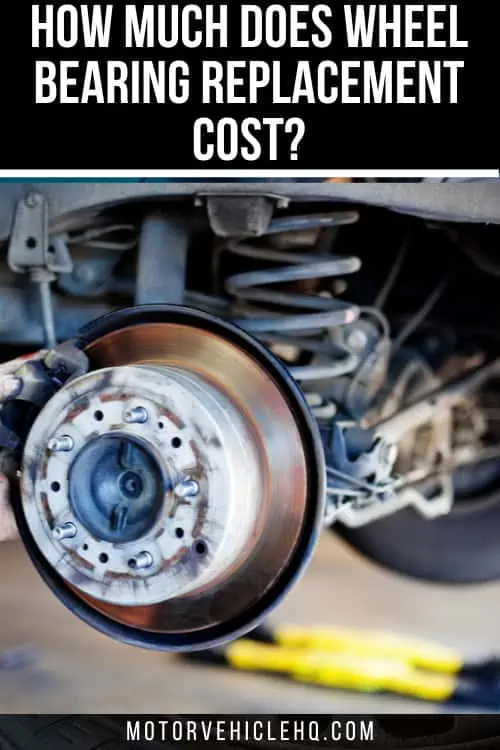

Nyangano Maurice specializes in vehicle troubleshooting and has more than 10 years of experience in the automobile industry. Over many years of experience as a car mechanic, he has acquired a broad range of skills, including engine repair, brake systems, electrical systems, and more. He frequently hosts community workshops and training programs to help motor vehicle owners understand their vehicles better.
